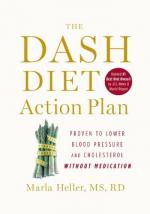|
This section contains 864 words (approx. 3 pages at 300 words per page) |

|
The pressure exerted by the blood inside the arteries is termed blood pressure. Several factors are accountable for its levels, the heart rate, volume and viscosity of blood pumped per beat, force of the heartbeat, elasticity and resistance of vessel walls, and the resistance of the capillary bed (i.e., the network of capillary vessels that permeates tissues). Capillaries are minute blood vessels connecting the arterioles to either veins or lymphatic vessels. Other factors with a role in blood pressure levels are the balance between potassium and sodium levels, and the action of pressure-controlling hormones.
As the heart contracts and relaxes in a pulsatile rhythm, systole, the contraction of the left ventricle that ejects blood into the aorta, distending its walls, exerts a pressure level of 120 mm Hg, whereas diastole (i.e., momentary heart relaxation) has a level...
|
This section contains 864 words (approx. 3 pages at 300 words per page) |

|


